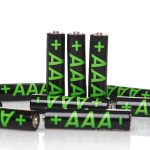Maybe you’ve heard about the Ultra Low Emission Zone, or ULEZ, and wondered how it impacts you as a driver in London. Introduced to address the city’s growing concerns about air quality and pollution, ULEZ has been making waves in the world of motoring, as well as in the lives of Londoners and visitors alike.
What is the Ultra Low Emission Zone (ULEZ)?
But, let’s start from the beginning, what exactly is this ULEZ everyone is talking about? Simply put, the Ultra Low Emission Zone is a zone in London where all cars, motorbikes, lorries and other vehicles have to meet certain emission standards or else they will incur a day charge.
Have you seen this : Which fuel-efficient cars are best for urban driving in London?
The aim of the ULEZ is to improve air quality in the city, by reducing the number of high-emission vehicles traveling within its confines. Cars that don’t meet the low emission standards will have to pay a daily charge of £12.50 for most vehicle types, including cars and motorcycles, and £100 for heavier vehicles like lorries.
But, it’s not only the drivers who don’t meet these emission standards who will have to pay. Owners of vehicles registered outside the UK that do not meet the ULEZ standards will also be required to pay the day charge.
Also read : How to navigate the UK car taxation system when buying a new vehicle?
ULEZ Expansion and its implications
Since its inception, the ULEZ has seen several expansions that have extended its reach further, encompassing more areas of London. This expansion of the zone has seen a rise in the number of drivers who have to either change their vehicles to meet the ULEZ standards or pay the daily charge.
In line with the expansion of the ULEZ, the emission standards have also become stricter over time. The initial standards, known as Euro 3 for motorcycles and Euro 4 for cars, have been replaced by Euro 5 for diesel cars and Euro 6 for petrol cars, which require vehicles to emit significantly less pollution.
The implications of the ULEZ expansion and stricter emission standards for drivers in London are considerable. Many drivers have found themselves needing to upgrade their vehicle in order to meet these new standards and avoid the daily charge. For those who cannot afford to upgrade, the daily charge can add up to a significant expense.
How does ULEZ impact London’s air quality?
The ULEZ is not just about charges and emission standards. Its main goal is to improve air quality in London. And so far, it seems to be making a difference.
Studies have shown that since the ULEZ was introduced, there have been significant reductions in nitrogen dioxide (NO2) and particulate matter (PM) concentrations in London’s air. This is particularly beneficial for the health of London’s residents, as both NO2 and PM are harmful pollutants that can cause respiratory problems and other health issues.
The ULEZ is also driving a shift towards cleaner transportation options, such as electric cars, hybrid vehicles, and cycling. This shift is expected to bring about further improvements in air quality over the coming years.
ULEZ and the future of driving in London
Looking ahead, the impact of the ULEZ on drivers in London is expected to continue. While the exact nature of this impact will depend on a range of factors, including future expansions of the zone and the introduction of new emission standards, one thing is clear: the ULEZ is here to stay.
If you’re a driver in London, the ULEZ will likely continue to shape your driving habits and decisions. Whether it’s choosing a low-emission vehicle to avoid the day charge, or opting for alternative transportation methods to reduce your carbon footprint, the ULEZ will play a role in your daily life.
In essence, the introduction and expansion of the ULEZ are changing the landscape of driving in London. And while this change may be challenging for some, it is a vital step in the city’s efforts to combat air pollution and create a healthier, cleaner environment for all.
ULEZ Compliance: How to make sure your vehicle meets the standards
So, how do you ensure your vehicle meets the ULEZ standards, and avoid any unnecessary daily charges?
Firstly, it’s important to know the emission standard your vehicle needs to meet. As of now, petrol cars that meet the Euro 6 standards, and diesel cars that meet the Euro 5 standards, are ULEZ compliant.
Next, you can check your vehicle’s emission standard on the vehicle manufacturer’s website, or by checking the vehicle’s V5C document. If your vehicle doesn’t meet the required standards, you may need to consider upgrading to a compliant vehicle, or be prepared to pay the daily ULEZ charge.
In closing, the ULEZ represents a major shift in the management of air quality in London. While it does place additional responsibilities on drivers, the end result – a cleaner, healthier city – is surely a goal we can all get behind.
ULEZ Scrappage Scheme: How it facilitates a cleaner London
The ULEZ has also led to the introduction of a scrappage scheme to help residents of Greater London – particularly those from low-income families – replace their high-emission vehicles. This scheme can be seen as part of a broader effort to promote cleaner air in Central London.
The scrappage scheme provides financial support to those who wish to replace their non-ULEZ compliant vehicles. The scheme provides a grant of up to £2,000 for cars and £1,000 for motorcycles to help low-income earners switch to cleaner vehicles.
Moreover, for those who rely on their vehicles for work, such as van drivers and taxi operators, the scheme provides up to £9,500 in scrappage support. This initiative aims to help small businesses and self-employed individuals in London transition to low-emission vehicles, thereby reducing their contribution to air pollution.
Indeed, the ULEZ scrappage scheme, coupled with the daily ULEZ charge, is a powerful incentive for Londoners to embrace vehicles that meet Euro standards. By doing so, they avoid paying the congestion charge and contribute to improving London’s air quality.
However, it’s worth noting that qualifying for the scrappage scheme requires meeting certain criteria. For instance, to qualify, you must live within the Greater London area, and your vehicle must not meet the ULEZ emissions standards. Checking the Transport for London website can provide further information about eligibility and how to apply.
The ULEZ’s Influence on the Future of Transport in London
The ULEZ is reshaping the future of transport in London. The emission zone is driving a shift towards more sustainable transportation options and promoting a culture of low-emission vehicle use across the city.
In the future, we can expect to see an increasingly dominant presence of electric and hybrid vehicles in response to the stricter Euro standards imposed by the ULEZ. Additionally, the growth in the popularity of cycling and use of public transport is expected to continue as Londoners adapt to the ULEZ regulations.
The ULEZ has also set a precedent for other cities worldwide. Many are looking to London as a model for how to effectively combat air pollution and promote cleaner transportation methods. The lessons learned from the ULEZ implementation and expansion could hold valuable insights for other cities looking to introduce their own low-emission zones.
In summary, the ULEZ has catalysed a significant transformation in London’s transportation landscape. While it’s certainly been a challenging transition for many, the long-term benefits – namely cleaner air, improved health, and a more sustainable city – are undeniably worthwhile.
As a driver in London, the ULEZ will undeniably affect your daily life. Hence, understanding the ULEZ standards and how to comply with them is essential. Whether you’re upgrading your vehicle, applying for the scrappage scheme, or exploring alternative transport options, it’s clear that the ULEZ is steering London towards a greener, cleaner future.











